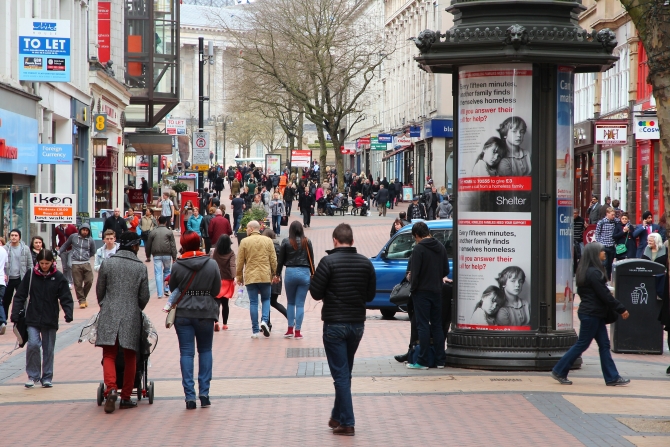Shop vacancy rates fell to their lowest level in five years last month as increased consumer confidence translated into greater stability in the retail and leisure sectors.

According to figures compiled by the Local Data Company (LDC), the number of empty shops on high streets and in shopping centres throughout the UK fell from February’s 13.1 per cent to just 13 per cent in March.
Furthermore, when the wider retail and leisure vacancy rate was taken into account, there was a corresponding drop from 11.7 per cent in February to 11.6 per cent, indicating that retailers and leisure operators are increasingly keen to expand their amidst a more favourable consumer climate.
The leisure sector remains the key driver of occupancy rates, with the figure in this category dropping to just 8.3 per cent. In part, this has been attributed to the number of shopping centres placing a greater emphasis upon their leisure offerings, upgrading and refurbishing existing restaurant and activities space in order to attract rapidly expanding national brands.
LDC director Matthew Hopkinson believes that the new figures reflect a heightening ability by retailers to respond to changing shopping trends.
He says; “These numbers are encouraging and reflect the wider positive news on consumer sentiment and spend – these numbers were last seen back in 2010 so it is a cause for celebration.
“Recent closure news from B&Q and Morrisons show that these numbers can very easily change in the opposite direction, as whilst these numbers show more shops opening, we are also seeing structural change where shops are changing use to alternative uses and March saw the largest number of demolished properties at 95 (40 in February).
“Whilst one should not underestimate the challenges retailers face with price deflation and a very savvy consumer we are continuing to see the growth of food and beverage outlets on our high streets which will occupy vacant shops when planning allows.”
At the height of the recession and ensuing dip in consumer spending, high street vacancy levels soared as retail brands struggled to compete with the encroaching presence of internet e-tailers who, with lower business rate payments and 24 hour accessibility, were able to charge less for items and captivate a wider pool of consumers.
However, as the internet shopping trend continues to shift from home delivery to click and collect preferences, brands such as Argos are managing to cash in and expand their high street presence.
Hopefully, whichever party wins the upcoming General Election, the business rates reviews will produce proposals that will further encourage take-up in the improving retail sector.